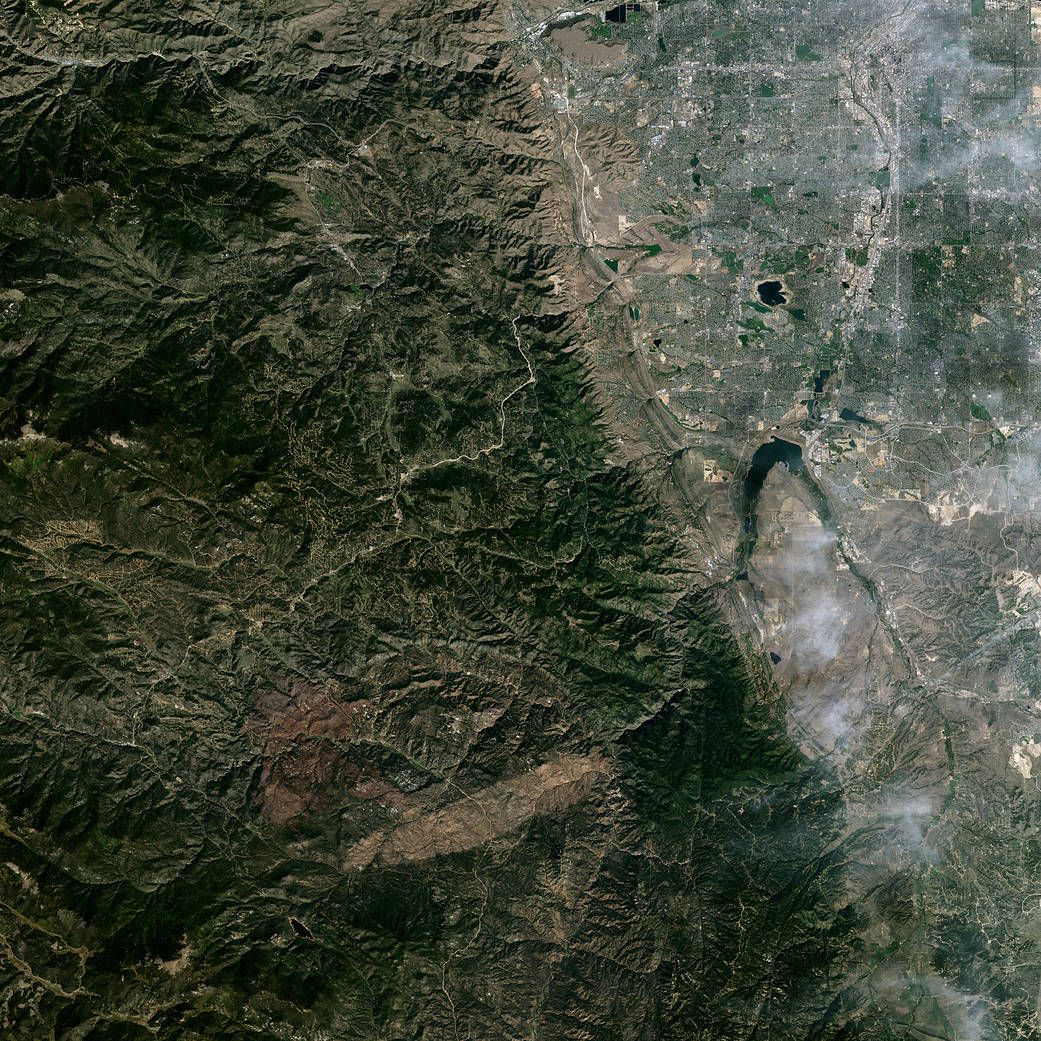
Skiers, hikers, and tourists prize Colorado’s Rocky Mountains for the steep ski slopes, challenging climbs, and spectacular views; geologists and paleontologists prize the region for the information it offers about the past. Lying next to Denver’s western suburbs, Dinosaur Ridge and Red Rocks Park offer a glimpse into the Colorado’s ancient history.
Landsat 7’s Enhanced Thematic Mapper Plus (ETM+) sensor captured this image on Sept. 14, 2000. The Rocky Mountain Foothills cut a line down the middle of this image. To the east is the Denver metro area, discernible through the meandering lines of residential neighborhood streets. To the west are the foothills and isolated outcrops of ancient red rocks.
When the Rocky Mountains rose, starting roughly 70 million years ago, the uplift unearthed rock layers that had hidden underground for thousands of centuries. One group of rocks included ancient red sandstones. These rocks date from 300 million to 250 million years ago, and they comprise the only evidence we have of a mountain chain far more ancient than the current Rocky Mountains.Image Credit: NASA/Landsat 7 Science Team/UMD Global Land Cover Facility/Jesse Allen



























